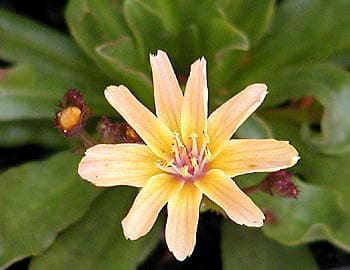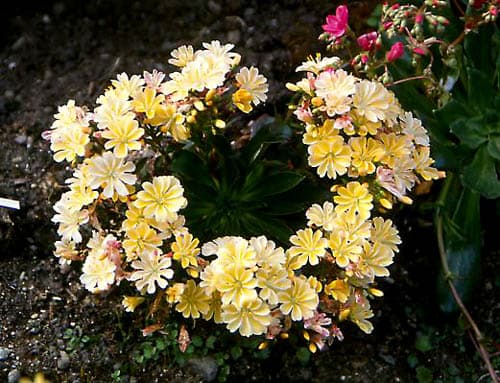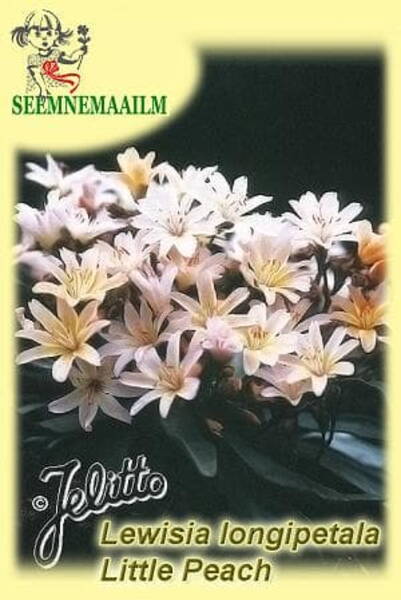It has a very limited distribution in the northern part of the Sierra Nevada at an altitude of about 2600 m.
This species comes into growth later than all other varieties and blooms from June to July. The flowers are arranged on stems 8-10 cm long - very attractive pink-peach flowers with a diameter of about 4 cm, resembling tiny water lilies.
This species blooms during the summer, as long as moisture is maintained, and then the leaves die off. But if it is grown in an alpine home, then tiny tufts of green leaves will be visible in winter.
If you plant it correctly - in a gap between stones with a large layer of drainage, then breeding this species will be successful.
1,0 g = 1450 seeds.

Family: Portulacaceae.
Special Features: magnificent yellow-orange-pink blossoms; heavy flower production on compact, upright stems. Long flowering season.
History: "Little Peach" cousin to the easy-to-grow "Little Plum" with the same characteristics.
Natural Flowering Period: May through Mid-June, and again in September.
Winter Hardiness: Z4-Z8.
Growth Habit: sturdy rosettes.
Foliage: leathery lance-shaped leaves.
Height with Flower: 15 cm.
Spacing between Plants: 25 cm.
Soil Requirement: Gritty, well-drained soils, pH 5.8 - 6.8.
Location: full sun or partial shade.
Use: in container or rock garden, plant together with Oenothera macrocarpa ssp. fremontii "Silver Wings", Sedum hybridum "Czar s Gold", and Euphorbia dulcis "Chameleon".
Specialities: excellent for container production, shows durability to cold, wet winters.
Cultural Tips:
Seed Requirement: 2 g / 1000 plants
Best Sowing Date: November-March
Way of Germination: Cold Germinator
Germination: the sowing must be kept warm (about +18 to 22°C) and moist for the first 2-4 weeks. After this period the sowing must be kept at a cold temperature (between -4 and +4°C) for another 4-6 weeks. It is not so important if the temperature is higher of lower during the cooling period, but the cooling period has to be prolonged because the synthesis of the germination inducer, hormonelike acid, slows down or comes to a standstill.
It is beneficial to cover the sowing with snow during the cooling period. After this cooling period, the sowing may not be immediately exposed to high temperatures. The most effective temperatures are between +5 to 12°C, even if germination has started. The best location for this sowing, even in March, April and May, is an open field, the cold frame or a cold greenhouse.
Germination to Transplant: 4 - 8 weeks.
Transplanting to salable Plant: 6 - 10 weeks.
Fertilization: Low.













